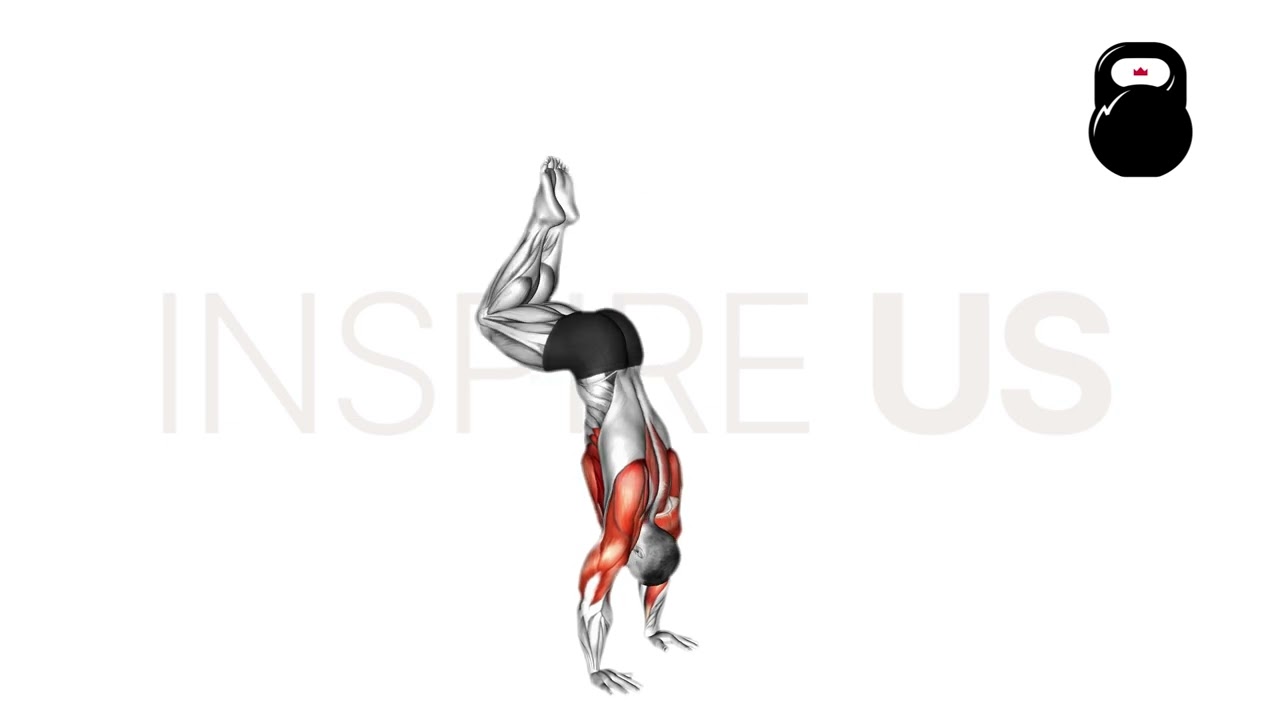Standing On the Hands: The Benefits of Handstands
Apart from training your core and other skeletal muscle groups, standing on your hands can improve circulatory system function, improve non-muscular tissue integrity and even enhance your performance in exercises like the barbell overhead press.
How Do You Handstand Correctly?
A correctly executed handstand will have the performer in an entirely inverted yet stable position with the arms straightened and the legs fully extended into the air. The hands should be placed approximately shoulder-width apart, with the palms flat on the floor.
Of course, small differences in execution and general stance will be present between different types of athletes and individuals.
However, the general idea is to balance entirely on the hands with the rest of the body stacked into a vertical line, often through sheer muscular strength and technique.
Note that a static handstand stance is different from a handstand push-up. The latter involves the performer bending at the elbows and lowering their torso towards the floor, whereas the former is not meant to involve any large dynamic movement at all.
Who Should NOT Do Handstands?
Handstands are challenging in not only a muscular sense but also to the joints of your body - not to mention the fact that they require solid technique to execute safely.
As such, it is best for the majority of untrained individuals to first attempt wall supported handstands prior to the free standing variation of the handstand.
In addition, those with a history of injuries to the back, shoulders, wrists or those with circulatory system conditions should all avoid performing handstands.
How to Hold a Handstand Stance if You Have Trouble Balancing
If you can’t quite hold a handstand position for an extended period - or otherwise can’t even handstand in the first place - then it is likely you’ll need to perform exercises that progress to the handstand itself.
Begin with conventional bodyweight push-ups and make your way towards pike push-ups.
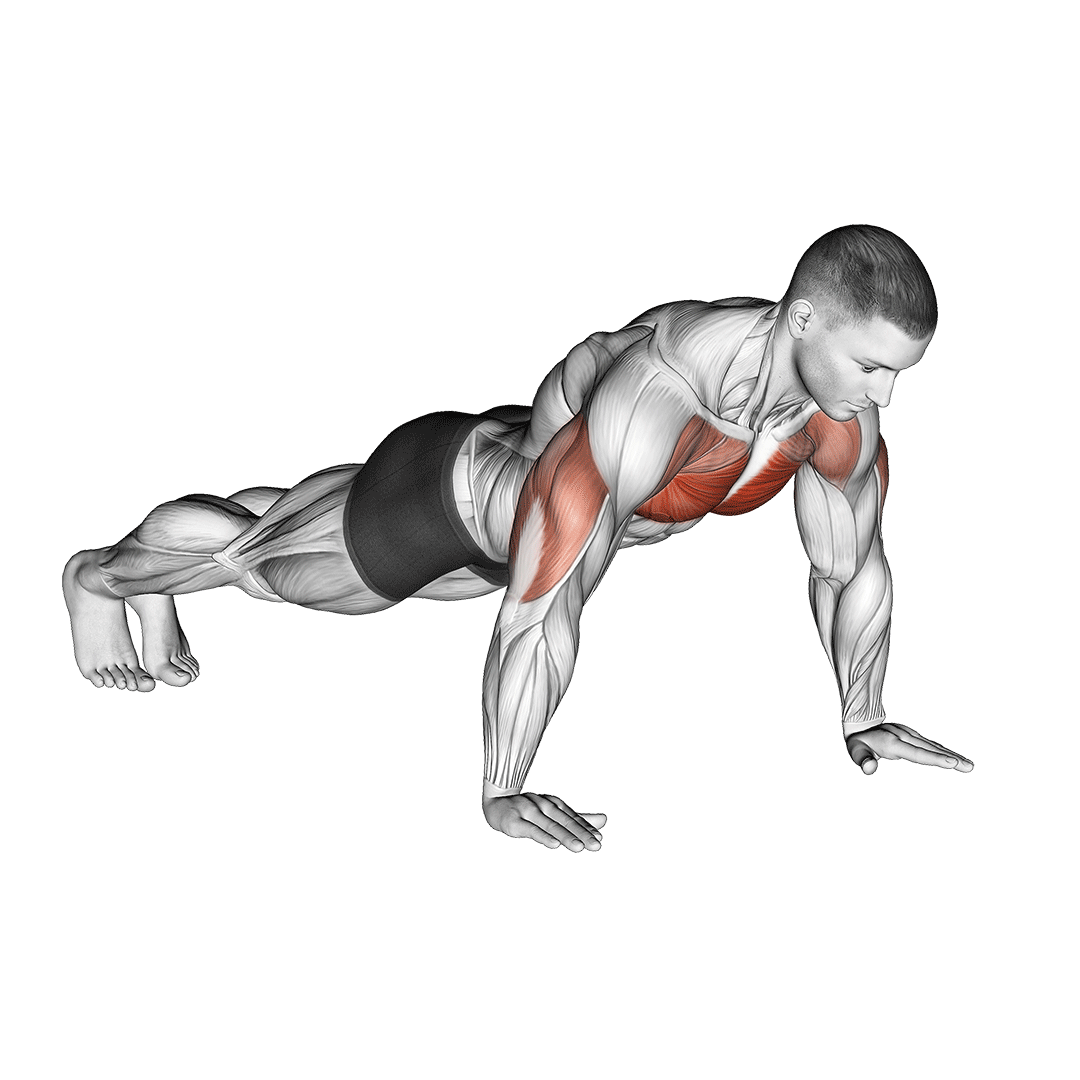
Once you can do the latter for multiple repetitions, graduate to decline pike push-ups and then finally attempt a wall supported handstand.
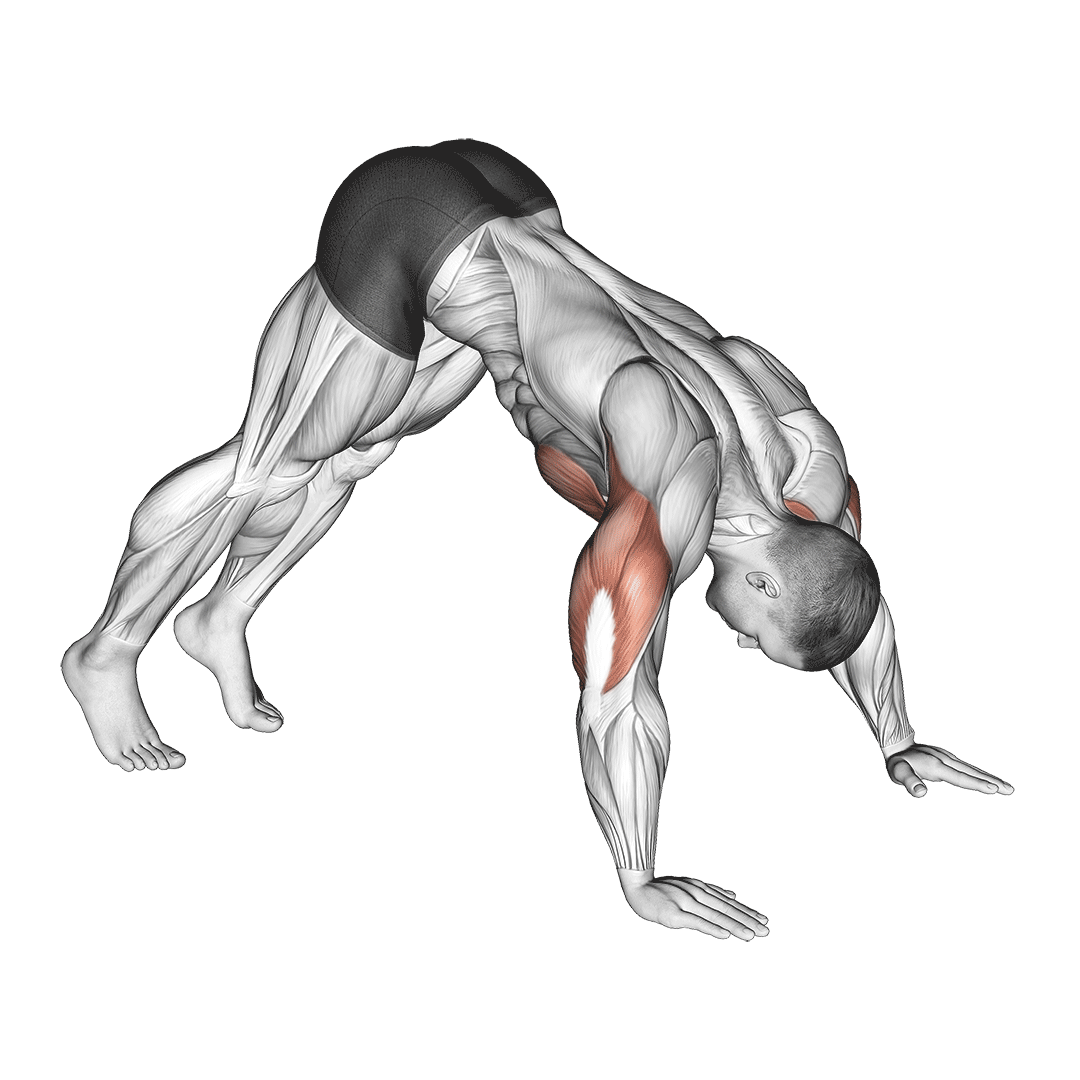
Keep in mind that this will take place over the course of several weeks as your muscles grow stronger and you become more familiar with inversion exercises.
Standing on Your Hands Builds Full Body Stability and Coordination
The first and perhaps most widely sought benefit of standing on the hands is its capacity to develop stability and coordination throughout the entire body.
Balancing on your hands is incredibly difficult for an extended period, requiring not only general isometric muscular strength but also good technique, a finely-honed sense of balance and excellent proprioception.
As such, regularly performing handstands for an extended period will improve all of these in a highly intense manner.
Who Benefits the Most From Standing on the Hands?
Gymnasts, calisthenics athletes, acro dancers and yoga practitioners in particular all require these skills in their chosen sport. Handstands and its ensuing push-up progression should all be seriously considered as a part of their training programs.
The Handstand Position Targets Multiple Muscles Simultaneously
Because of how difficult balancing on the hands can be, the body will need to contract quite a number of different muscle groups simultaneously to keep the performer in place.
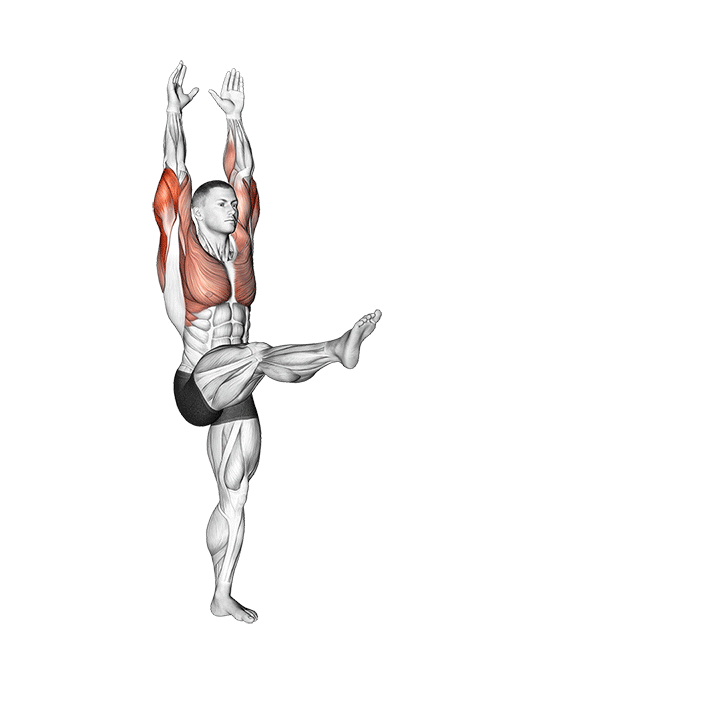
Although the sort of muscular contraction exhibited is primarily static, it is nonetheless intense enough to result in quite a workout if the handstand position is held for an extended period.
Core Musculature
The main muscle group recruited during handstands is the core, as it keeps the performer in place and ensures that the entire upper section of the body remains straightened throughout the stance.
The core is made up of the abdominal muscles, obliques, erector spinae and the various smaller muscles of the lower back. Each works in tandem to keep the waist straight, the body vertically stacked and helps dissipate some of the balance demands that are distributed to other muscles involved in the handstand.
Anterior Deltoids, Triceps, Latissimus Dorsi, Pectorals, Trapezius and Wrist Flexors
The handstand is truly a wide-reaching exercise, targeting various small and large muscle groups throughout the upper body.
The most intensely worked of these are the anterior deltoids, triceps and wrist flexors - each of which is responsible for keeping the entire body vertically aligned and helping the core muscles stabilize the performer.
Of course, alongside these are the pectorals, trapezius and latissimus dorsi. While not working as intensely, these three also aid in stabilizing the body by stabilizing in the vein of arm adduction (pecs) and controlling or stabilizing the scapula (lats and traps).
Glutes and Quadriceps
Handstands also work muscles below the waist - primarily the glutes and quadriceps.
The glutes contract and squeeze to push the hips forwards and further aid in creating a straight line with the body. Likewise, the quadriceps maintain knee extension, thereby keeping the shins and feet vertically stacked over the body at the top of the entire stance.
Doing Handstands Carries Over to Other Exercises
Because handstands improve muscular endurance, isometric strength and many other characteristics related to physical performance, exercises seemingly unrelated to the handstand itself will become less challenging as a result.
Of course, if you wish to become better at performing the overhead press or gymnastics, it is still better to perform those specific activities themselves. However, your performance in said activities can be indirectly improved by performing handstands as well.
Handstand Push-Ups, Overhead Presses and Incline Bench Press
Resistance training specific movements involving overhead extension or an inverted stance all directly benefit from the muscular development derived from standing on the hands. This is especially true for compound exercises where the anterior deltoids, triceps or pectorals are a major mobilizer muscle.
A few good examples of these are the barbell overhead press and the incline bench press - both feature the aforementioned characteristics as well as a similar stance to the handstand at some point during their range of motion.
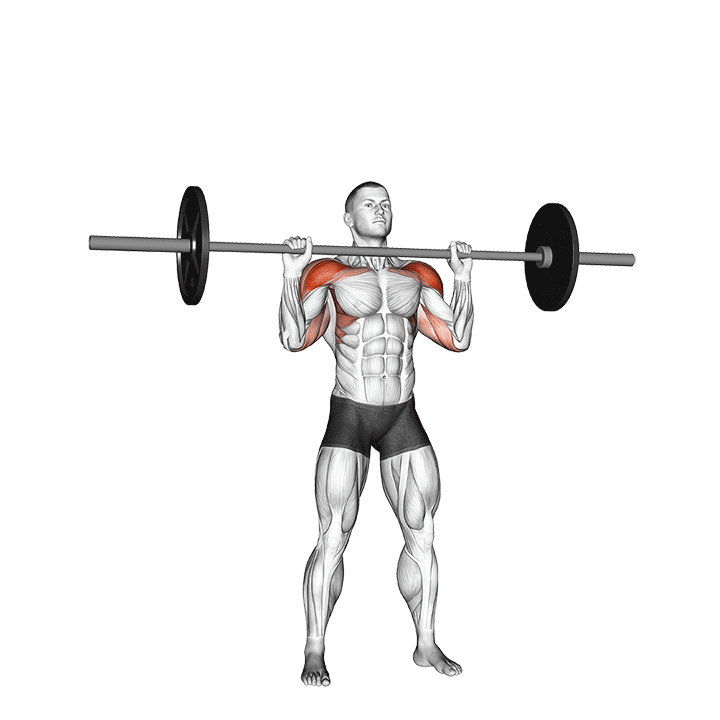
In addition to the aforementioned movements, practicing handstands will also indirectly improve performance of handstand and pike push-ups as well. The static handstand is even used as a progression exercise to the more difficult handstand push-up if stability is a limiting factor.
Gymnastics, Yoga, Dancing and Performative Swimming
Outside of strictly resistance training, many athletic disciplines and physically intensive activities make use of the general handstand movement - or aspects improved by holding a handstand.
In the art of yoga, poses like the downward-facing tree pose or hawk pose all feature an actual handstand during their sequence of movements.
Likewise, gymnastics will either feature a handstand itself, a variation of it known as the curved-back handstand, or involve an otherwise handstand-like movement pattern while executing a stunt.
Even less “traditionally” athletic disciplines like breakdancing, acro dancing or other performative sports both involve the handstand itself and require the stability, coordination and strength built through practicing handstands.
Handstands Improve Tissue Health, Circulatory System Function and can Slow Aging
Outside of athletic performance and muscular development, regularly performing handstands can improve various aspects of your health and physiology - some of which are unique to it and some that are shared with other forms of resistance training.
Bone Density and Osteoporosis Prevention
Although just about any form of resistance training will cause the body to reinforce impacted bones, handstands directly pressure the bones of the arms and shoulders.
Over time, this will lead to even greater bone density in these areas as the body builds up the density of minerals to counteract any future pressure that may be present.
As a natural benefit to greater bone density, these parts of the body will be less likely to suffer from acute injury or develop bone-related degenerative conditions like osteoporosis or osteoarthritis.
Challenges the Cardiovascular System, Builds Circulatory Elasticity and Improves Oxygen Uptake
While handstands are nowhere near as effective at improving systemic circulatory function as aerobic exercise, it can nonetheless produce minute improvements in vascular elasticity, raise blood pressure (in a good way) and improve general oxygen uptake/intake to meet the demands of the muscles.
Over time, the performer will find that their body’s muscles become more efficient with their use of oxygen, and that their circulatory system will be more accustomed to an inverted position, heart beat and cerebrovascular pressure included.
For better results, perform handstands alongside aerobic exercise like low impact steady state jogging or general pace swimming.
However, keep in mind that if you are at risk of aneurysms, cardiac arrest or otherwise suffer from a circulatory condition, it is best to avoid inversion exercises like the handstand.
Handstand Alternatives that Provide Similar Benefits
If the handstand is too static for your liking - or if you can’t quite keep steady - try the following alternatives out. Each offers similar benefits to standing on your hands without actually needing to do so.
Pike Push-Up Holds
Pike push-up holds are a less challenging alternative to handstands where the hands and feet remain on the ground but the hips are thrust into the air, forming a triangle with the body.
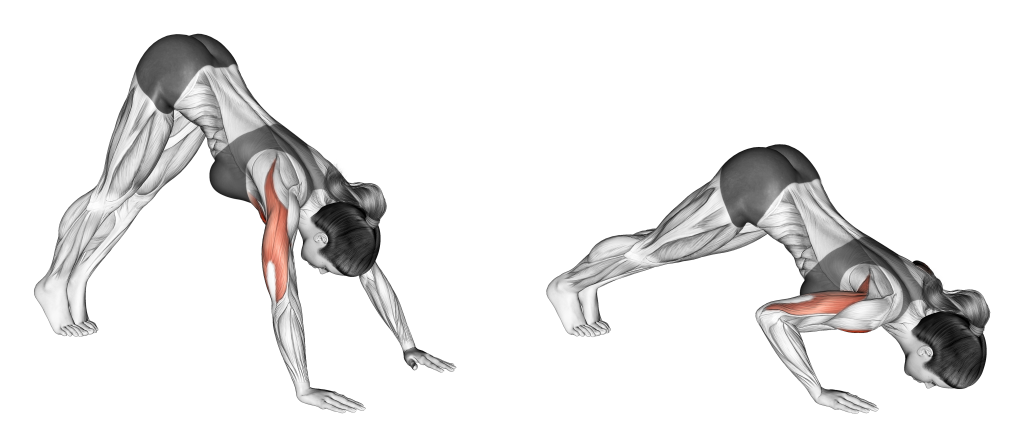
As the name implies, rather than actively performing push-ups in this stance, the exerciser will instead maintain this stance for a predetermined length of time. The feet are gradually walked closer to the front (or raised) in order to make the hold more difficult.
Pike push-up holds provide similar isometric muscular training to handstands, albeit to a significantly lesser intensity. They are best used as a handstand substitute when balance or fear prevent a full inverted stance.
Slow Tempo Overhead Press
Weightlifters seeking a greater focus on pure muscular development over coordination or balance can try performing overhead presses with a significantly slow tempo.
This variation is performed in much the same way as any other overhead press, only with each repetition stretched out as long as 6 seconds each.
Note that substituting handstands with slow tempo overhead presses comparatively eliminates involvement of the glutes or core. Use it as an alternative solely for targeting the arms, shoulders and chest.
Handstand Walks
For an even more intense training session, the handstand can be made into a highly dynamic exercise by “walking” forwards with the hands.
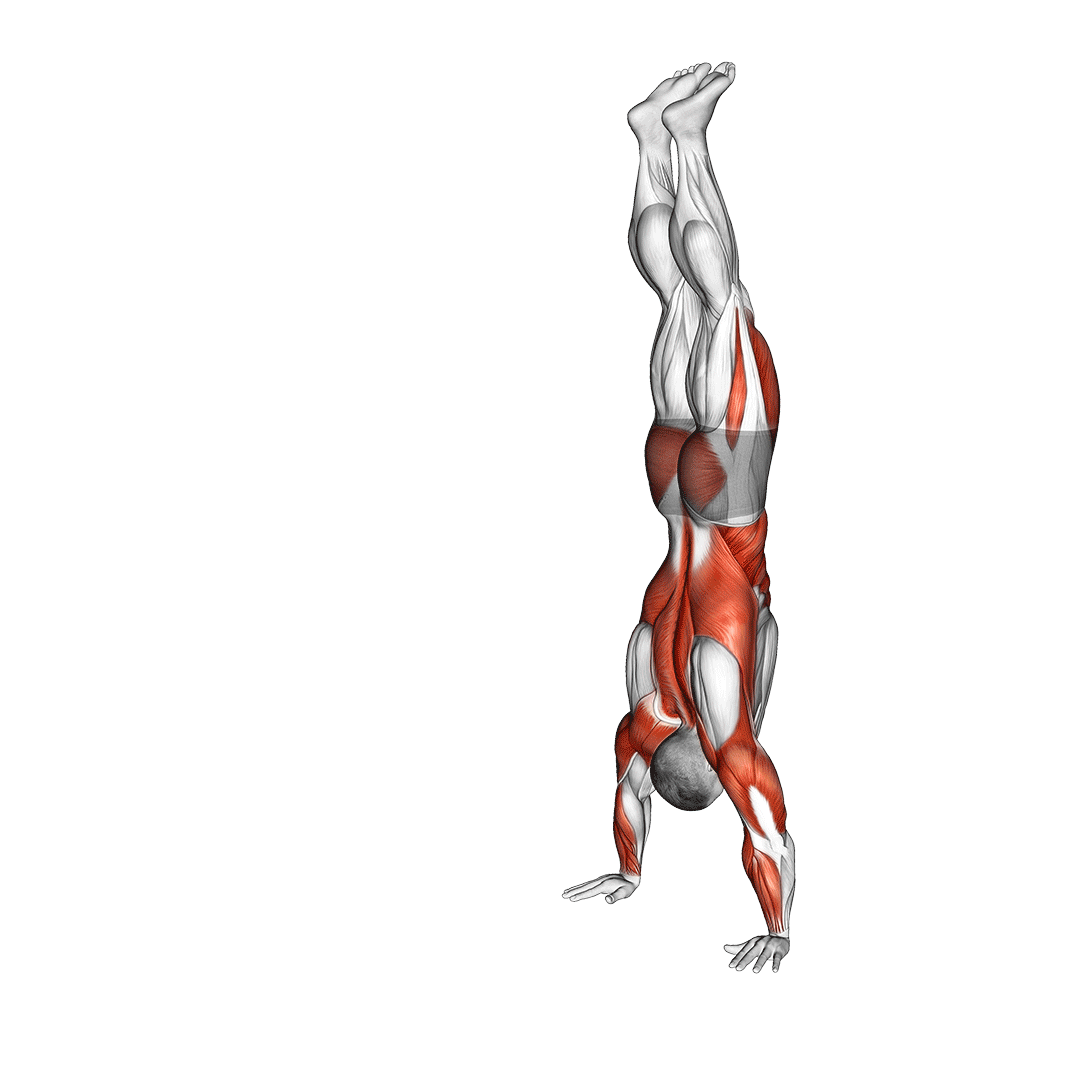
Aptly named handstand walks, performing handstands with this addition will maximize muscular development in both a static and dynamic sense - as well as burn more calories and further improve general balance and coordination.
Frequently Asked Questions (FAQ)
Are Handstands Good for Your Health?
Yes - handstands are excellent for improving circulatory, bone and muscular health.
However, keep in mind that they are in and of themselves a difficult exercise, and you’ll likely need to build a baseline level of strength and health before attempting them.
What are the Negative Effects of Handstands?
When performed incorrectly or to excess, handstands can lead to acute injuries, pressure-related damage to the wrists and elbows or even more serious types of injury.
Furthermore, those susceptible to circulatory system issues will find the sudden increase of cerebral blood pressure dangerous. Individuals have been known to lose consciousness while in a handstand position. Speak to a physician prior to attempting handstands.
What is Standing on Your Hands Called?
Standing on your hands is otherwise known as a handstand hold - or simply “handstands”.
References
1. Liu H, Xu Q, Xiang X, Liu D, Si S, Wang L, Lv Y, Liao Y, Yang H. Case Report: Passive Handstand Promotes Cerebrovascular Elasticity Training and Helps Delay the Signs of Aging: A 40-Year Follow-Up Investigation. Front Med (Lausanne). 2022 Apr 26;9:752076. doi: 10.3389/fmed.2022.752076. PMID: 35559343; PMCID: PMC9086612.
2. Thomas, Ewan, Carlo Rossi, Luca Petrigna, Giuseppe Messina, Marianna Bellafiore, Fatma Neşe Şahin, Patrizia Proia, Antonio Palma, and Antonino Bianco. 2023. "Evaluation of Posturographic and Neuromuscular Parameters during Upright Stance and Hand Standing: A Pilot Study" Journal of Functional Morphology and Kinesiology 8, no. 2: 40. https://doi.org/10.3390/jfmk8020040
3. Alkhawaldeh, Ibtehal. (2023). Biomechanical Fundamentals of Hand Standing and Somersaults: The Impact of Coaching Interference. Retos. 51. 1-5. 10.47197/retos.v51.99859.

